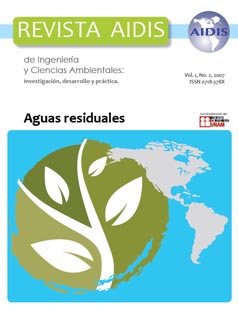Degradación biológica de fenol utilizando técnicas respirométricas
Main Article Content
Abstract
Phenol is a common constituent of the wastewater, found in several industries. Even at low concentrations it is toxic, and for this reason efficient treatment methods are required, in order to reduce the phenol concentration in the wastewater to acceptable levels. In the province of Buenos Aires the limit of discharge in surface waters is as low as 0.5 mg/L. Of the many applicable existing methods for the degradation of phenol, biological treatment is especially recommended, as it has a great potential for transforming almost completely the phenolic components in innocuous end products. The objectives of the present investigation were to analyze the biological degradation of phenol, using a seeded and a non‐seeded activated sludge process; and also, to obtain kinetic and stechiometric parameters, by means of respirometry. Semi‐continuous to lab scale reactors were used in the activated sludge process. In order to evaluate the effect of the phenol on the microbial growth a closed respirometer was used. The reactor was filled with sludge (seeded and non seeded), previously washed and buffered at pH 7, and phenol was added in such a way that concentrations between 20 and 4000 mg/L were achieved. Oxygen concentration was measured along time, so that a representative slope could be obtained in graph. In the case of the non acclimatized biomass it was observed that the phenol produces an effect of `inhibition` on the microorganisms at concentrations over 20mg/L. For the acclimatized biomass a faster rate of oxygen uptake was observed as well as an immediate increase in the efficiency of phenol reduction. The oxygen uptake was adjusted to the equation of Haldane, several kinetic constants being obtained.
Article Details
How to Cite
[1]
Albertario, M.E., Contreras, E.M., Bertola, N.C. and Zaritzky, N.E. 2009. Degradación biológica de fenol utilizando técnicas respirométricas. Revista AIDIS de ingeniería y ciencias ambientales: Investigación, desarrollo y práctica. 1, 2 (Nov. 2009).
